Fantastic creatures: Transparent animals whose existence is hard to believe
These animals have almost achieved invisibility, because many of them have transparent skin. Why do they need it? As a rule, if an animal is not protected by sharp teeth, a toxic secret, the ability to move very quickly or a small size, it has to resort to disguise. And the best disguise is transparency.
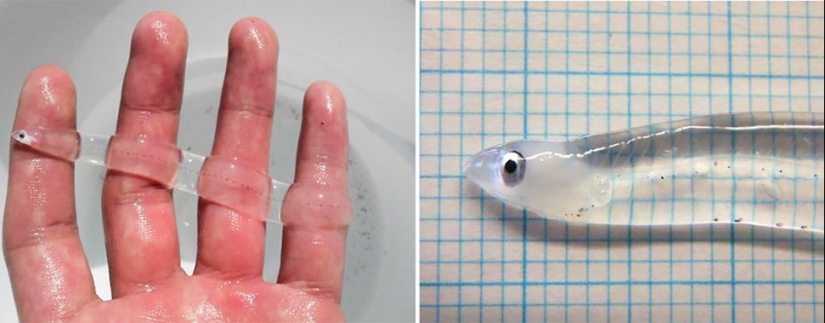
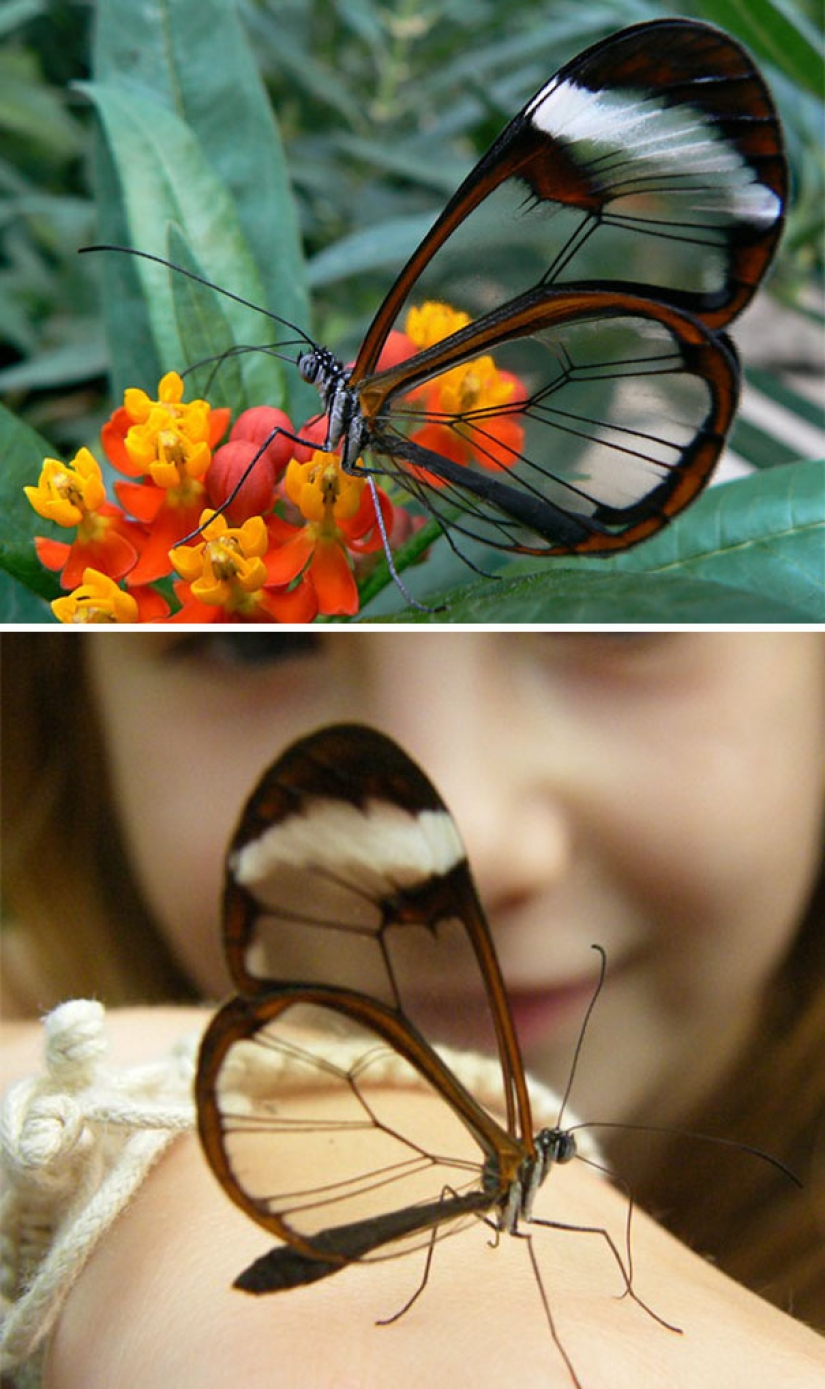
Greta otho (glass butterfly) is a species of butterfly from the family Nymphalidae. She has transparent wings due to a combination of three factors: the low light-absorbing ability of the tissues that make up the wings, the weak scattering of light falling on them by the wings, as well as the weak reflectivity of the surface of the wings. Adults of the glass butterfly are mainly found in Central and South America, including Chile. They can migrate vast distances, and their appearance has been recorded in places such as Mexico and Texas.
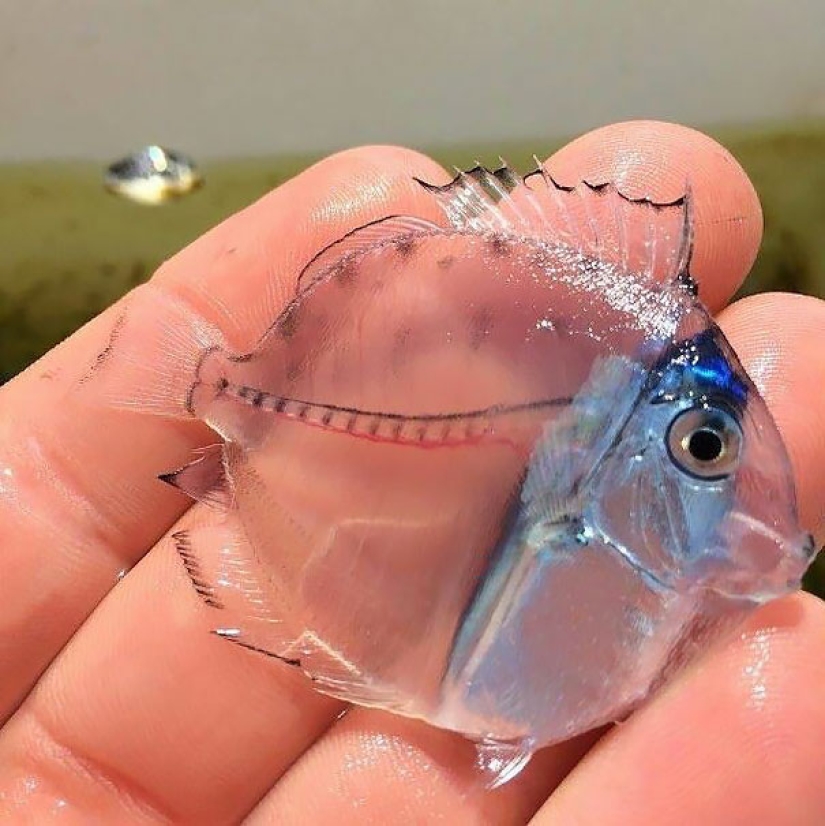
This transparent fish is a young individual of a surgeon fish. Their habitat is quite large, and they are found in the coastal waters of New Zealand. It's hard to believe, but this is the same kind of fish as Dory from the cartoon "In search of Nemo". They can grow up to 30 cm in length and are popular as aquarium fish.
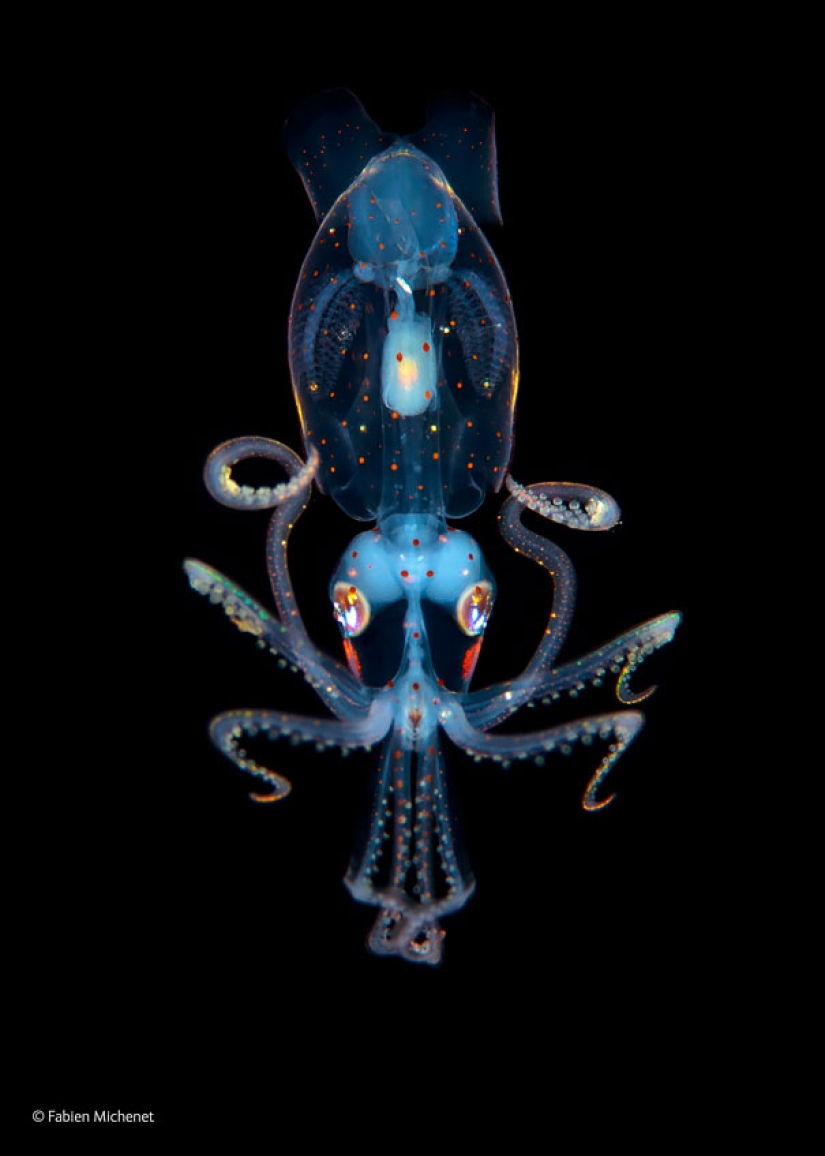
This is a young specimen of the large-winged firefly squid (Ancistrocheirus lesueurii). Its transparent body is covered with specks of pigment-filled cells, and bioluminescent organs are located under the eyes. Such squids are found in tropical and subtropical waters of the World Ocean, often at depths from 200 to 1000 meters.
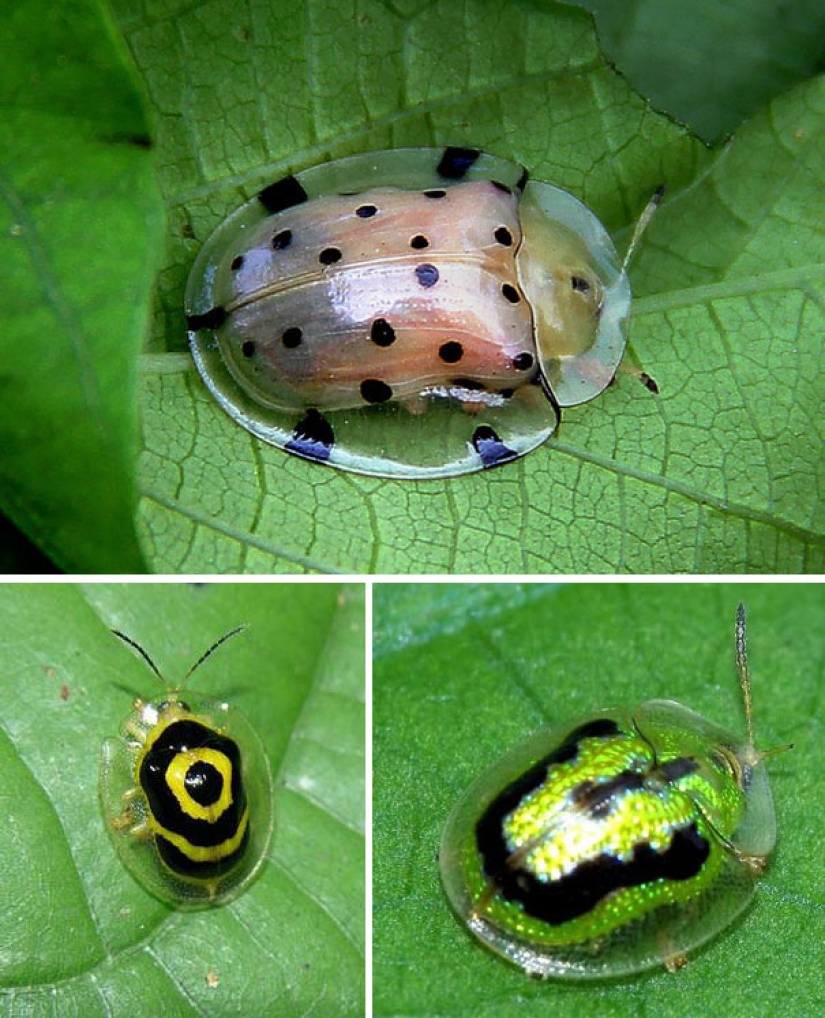
Shield-noses, or turtle beetles, are not completely transparent, but they have a skeleton that is almost invisible. The purpose of the transparent outer shell is to deceive potential predators, since there are spots on it that serve as a warning. Turtle beetles come in many varieties, and their color under the transparent shell can be very diverse.
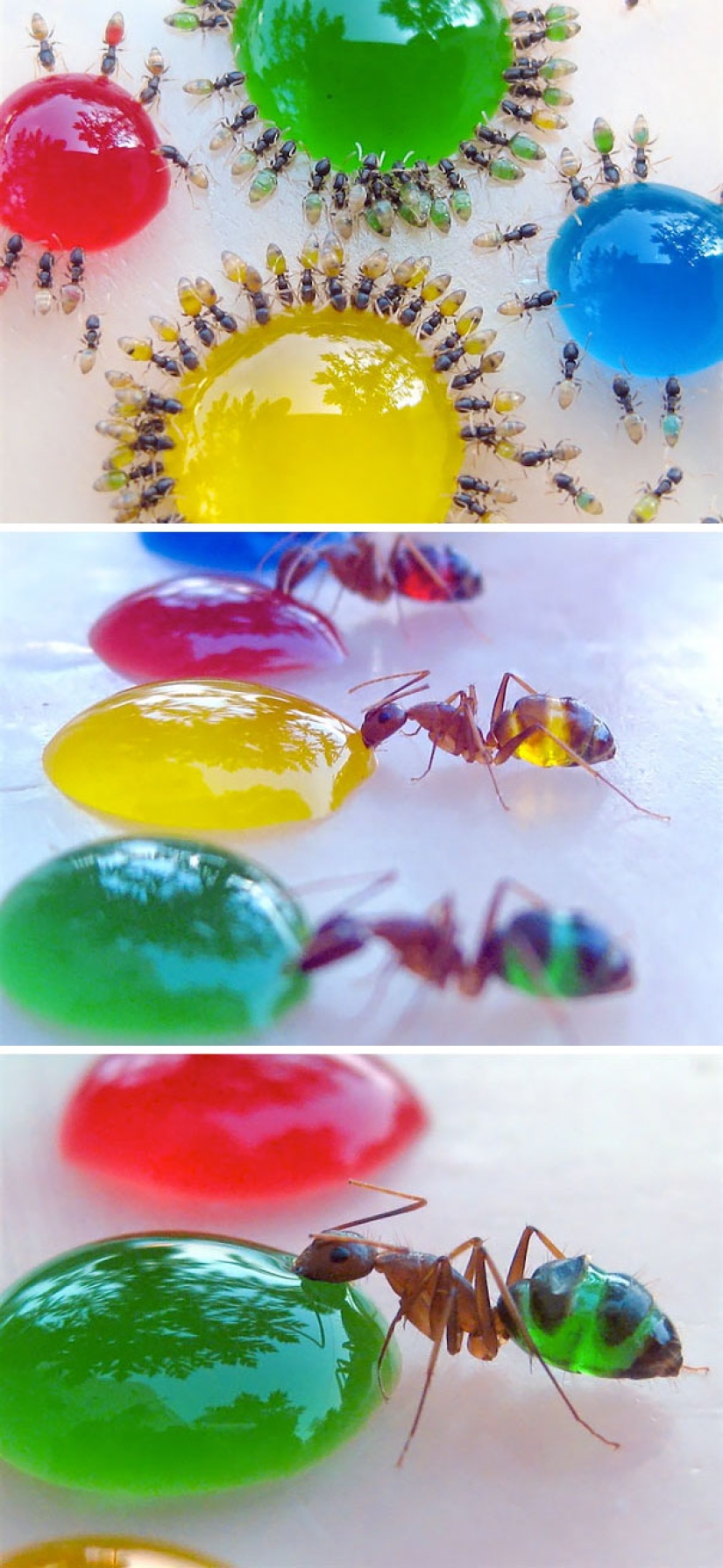
The Pharaohs ant (Monomorium pharaonis) is a small (2 mm in length) yellow or light brown insect with an almost transparent shell, which is known as an intra—house parasite, especially annoying hospitals. The origin of this species is unknown, but it is found in all corners of the planet.
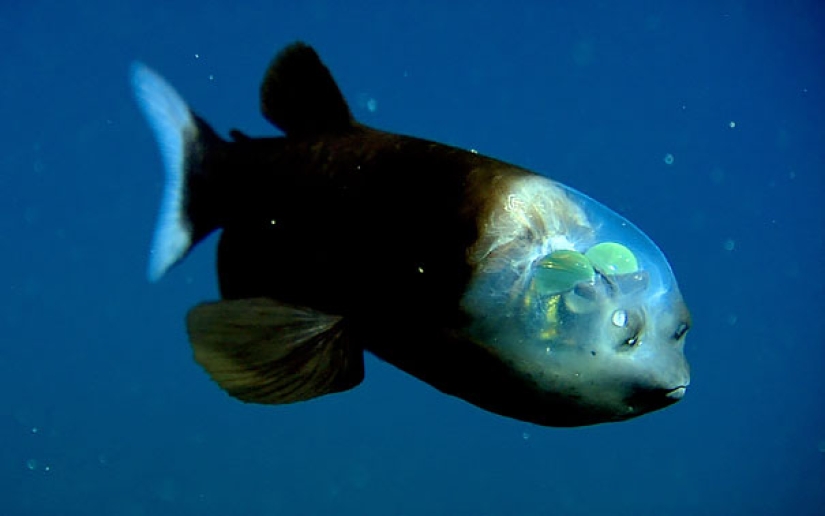
Little-mouthed macropinna is the only species of the genus macropinna belonging to the family of Opisthoproctes. She is distinguished by an unusual transparent vault of the skull, through which the lenses of her eyes are visible. This type of fish has been known to science since 1939, but it was only captured in the wild in 2004. The old drawings do not show a transparent vault, because it is usually destroyed when fish are extracted from deep waters.
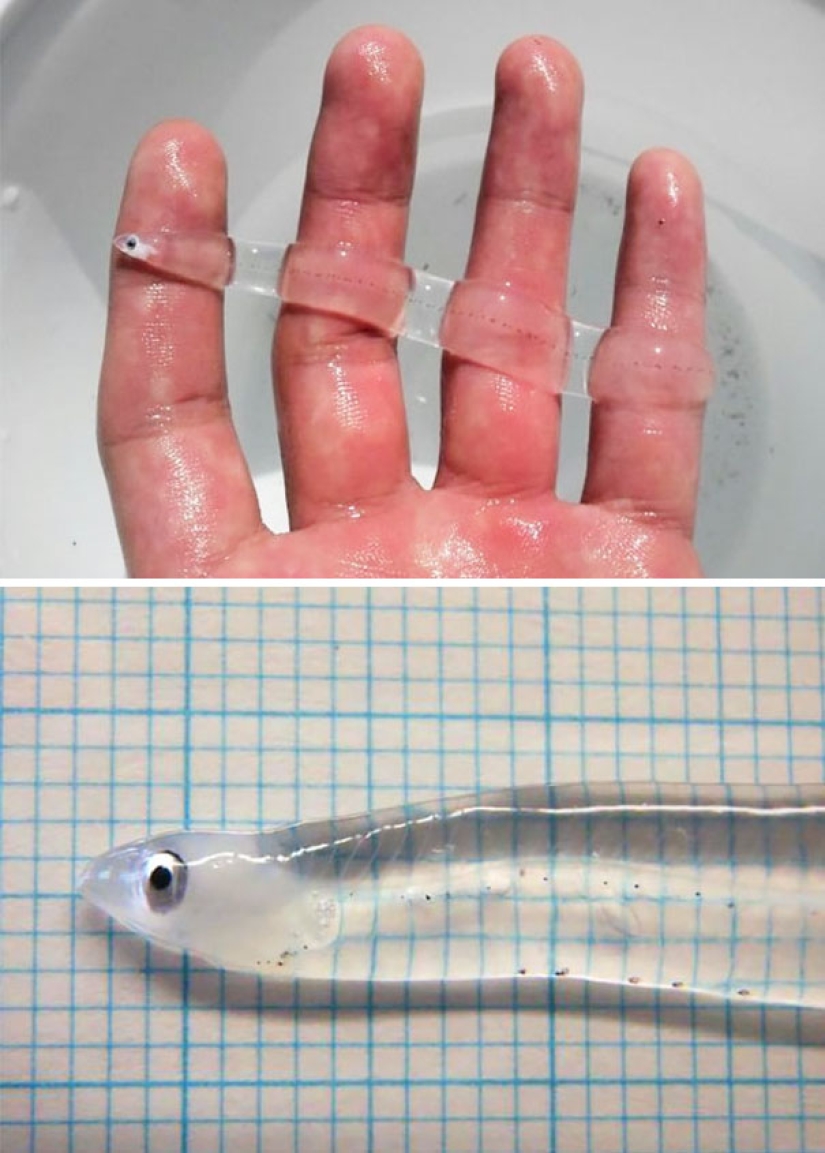
European river eels change color several times in their lives. At first they are transparent, and then they turn brownish-yellow on the sides and on the belly. After 5-20 years in fresh or salt water, eels reach puberty, their eyes become larger, their sides become silvery, and their bellies become white. At this stage they are known as "silver eels".
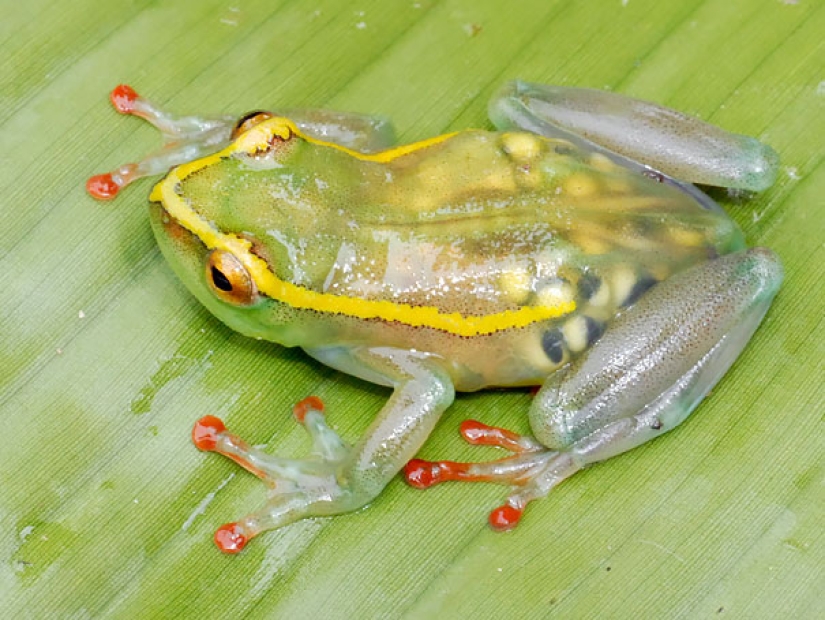
Hyperolius leucotaenius is a species from the family of paddlefoot frogs endemic to the territory of the Democratic Republic of the Congo. It was believed that this species was extinct, but in 2011 these transparent frogs were discovered and photographed on the banks of the Elila River during an expedition led by Eli Greenbaum from the University of El Paso in Texas.
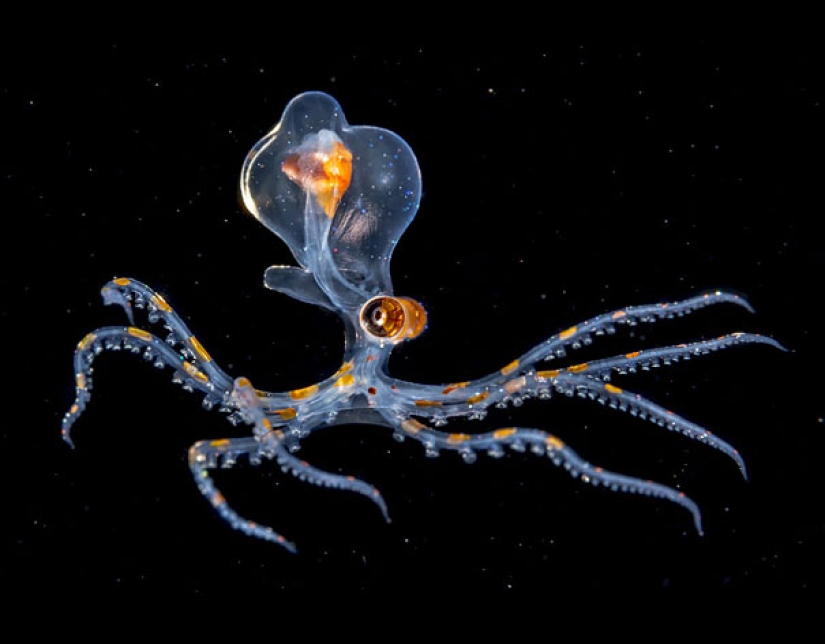
This young octopus is only two centimeters wide, and its internal organs are visible through a transparent shell. The specimen was photographed at night in deep waters off the coast of Tahiti. Orange spots on the tentacles change color and are used for camouflage.
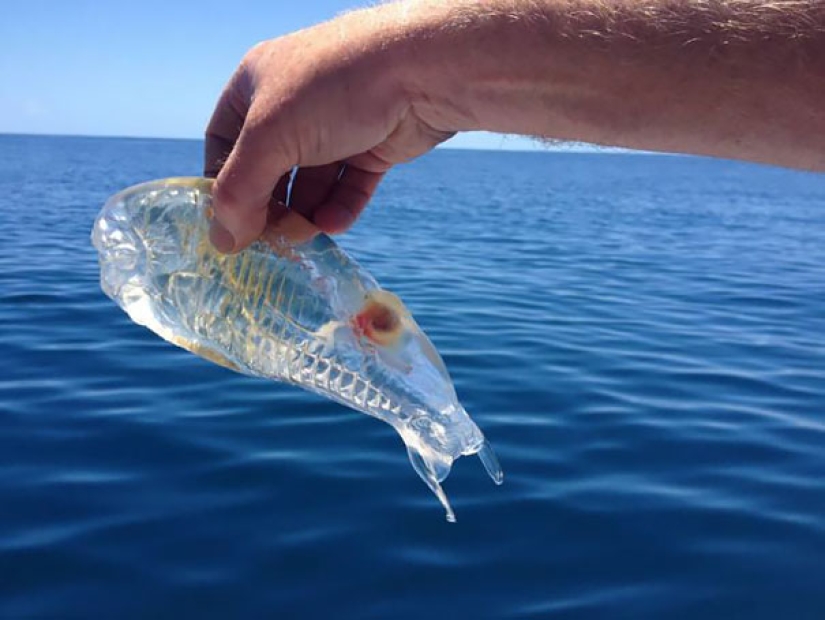
This fish was caught off the coast of the Karikari Peninsula on the north island of New Zealand. Experts believe that this is Salpa maggiore (Salpa maxima), usually found in the southern seas.
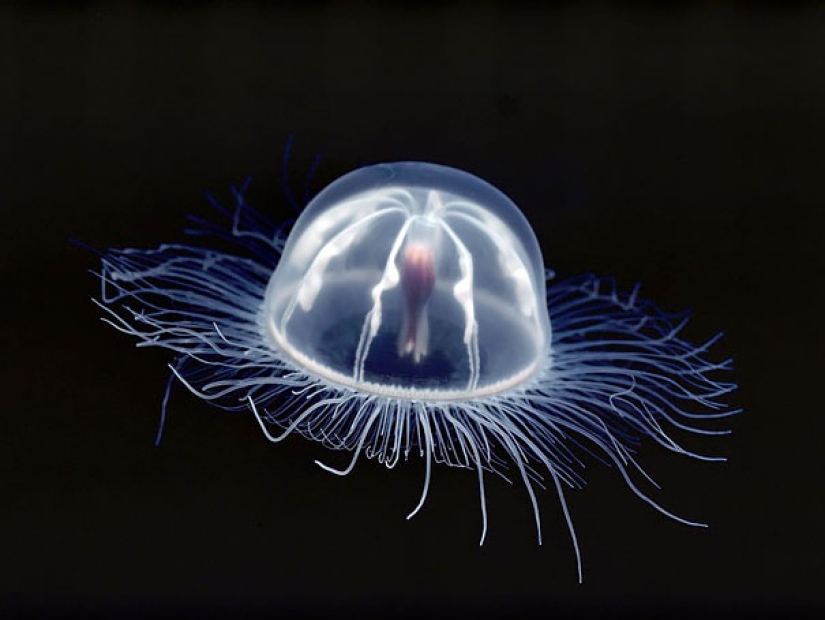
Turritopsis dohrnii are otherwise known as immortal jellyfish. This is a kind of small biologically immortal jellyfish that are found in the Mediterranean Sea and in the coastal waters of Japan. This is one of the cases known to science when an animal is able to completely transform to a sexually undeveloped, colonial stage after it reaches puberty as a single individual.
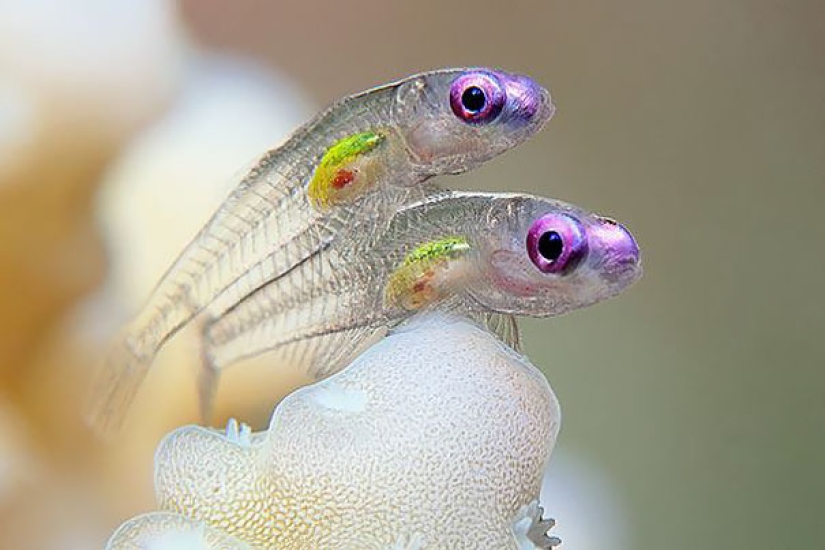
Transparent fish.
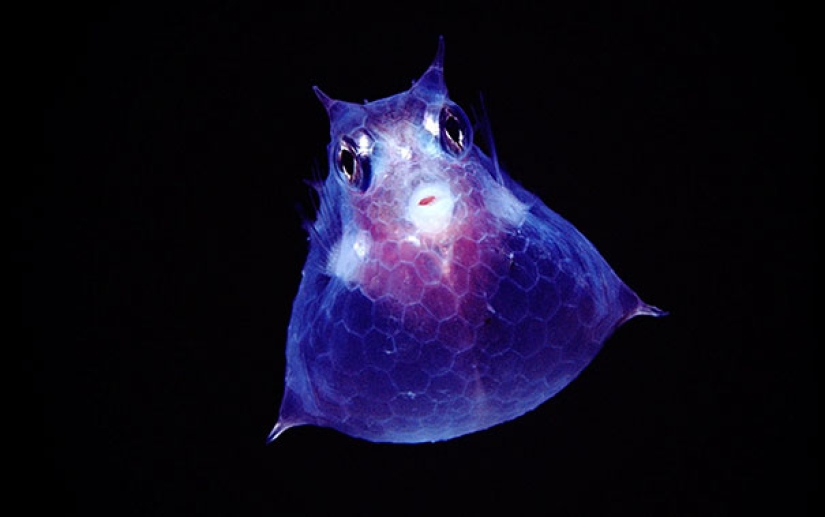
The young individual is a female.
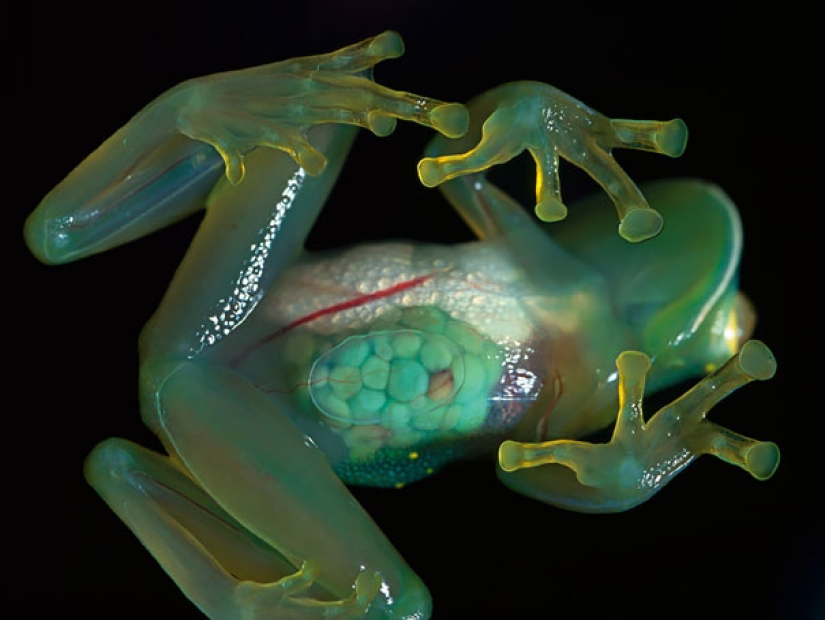
Glass frogs are a species from the amphibian family Centrolenidae. The main background color of these frogs is light green, but the skin on the abdomen of some members of this family is transparent. Internal organs, including the heart, liver and intestines, are visible through the skin, hence the commonly used name.
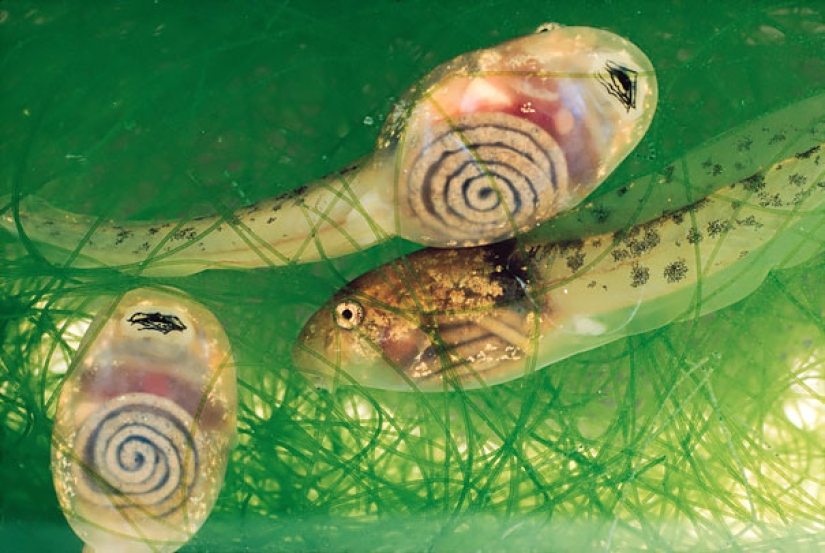
Costa Rican tadpoles with transparent bellies, through which the intestines, neatly arranged in a spiral, are visible.
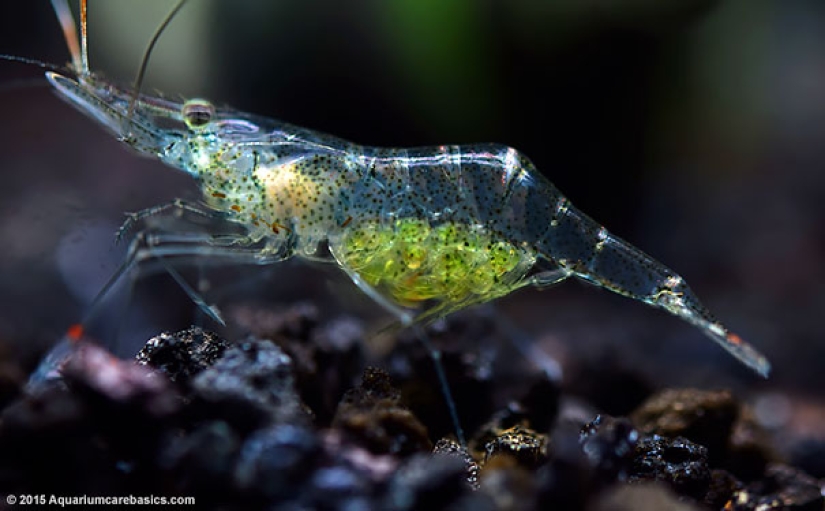
Sea goat, or mole crab.
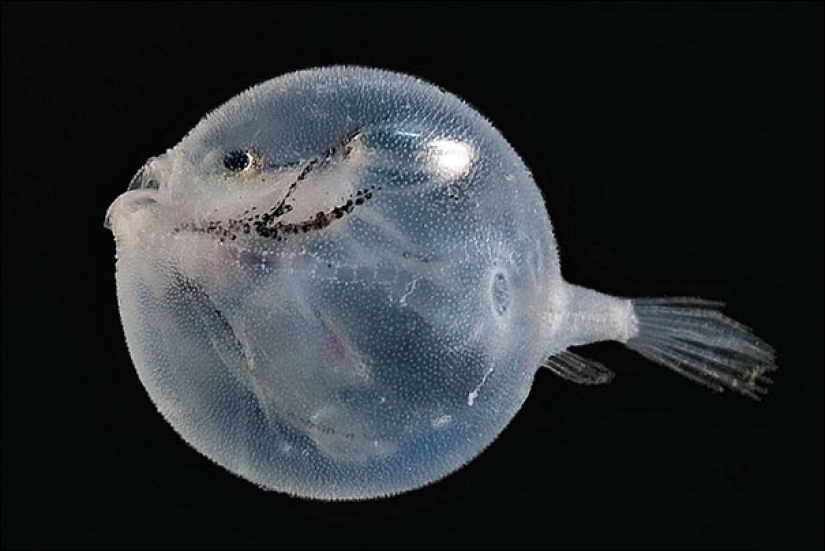
Deep-sea devils, or anglers, have transparent skin, similar to jelly. The skin is colored only when the individual reaches the adult state.
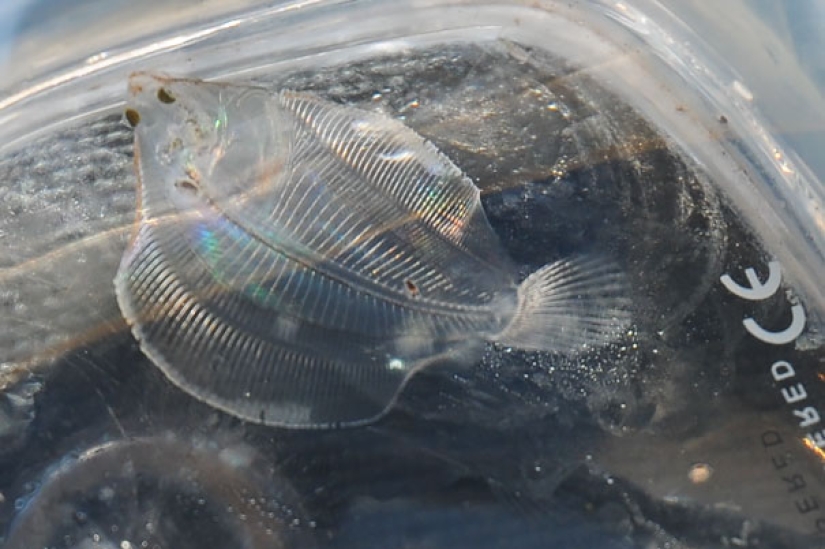
Transparent flounder.
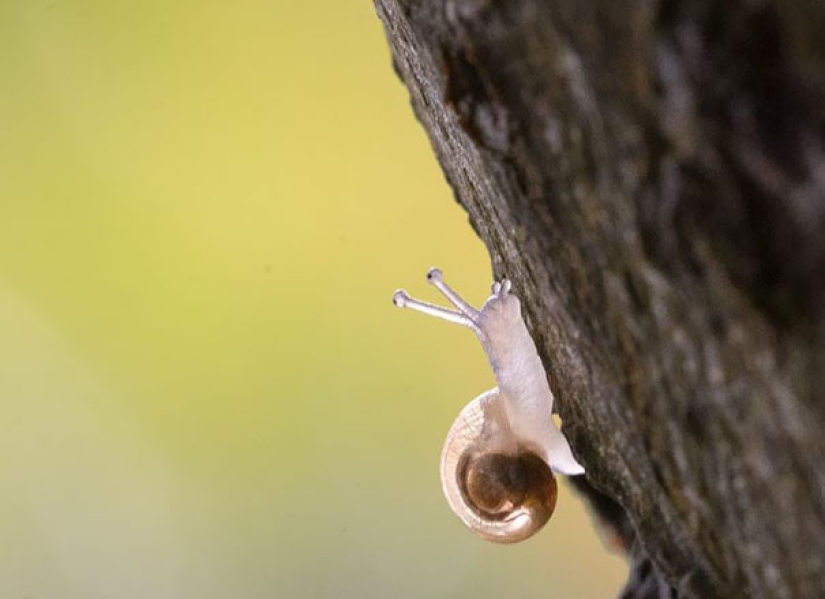
Transparent snail.
Recent articles

Leonardo da Vinci was accused of being fond of orgies. William the Conqueror, despite all his successes, was called a "Bastard" ...

Modesty? Decency? A sense of tact? No, you haven't heard! Just look at what the people from the selection below are doing! No ...

American documentary photographer Bruce Davidson came to the UK in 1960 for a couple of months on the assignment of Queen magazine. ...